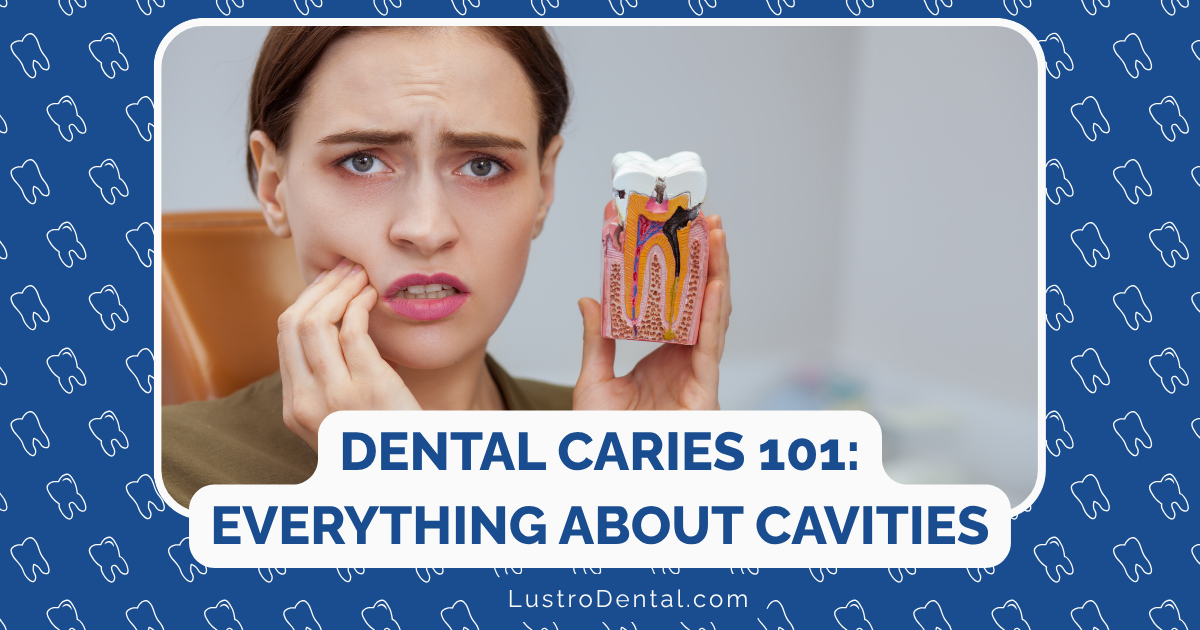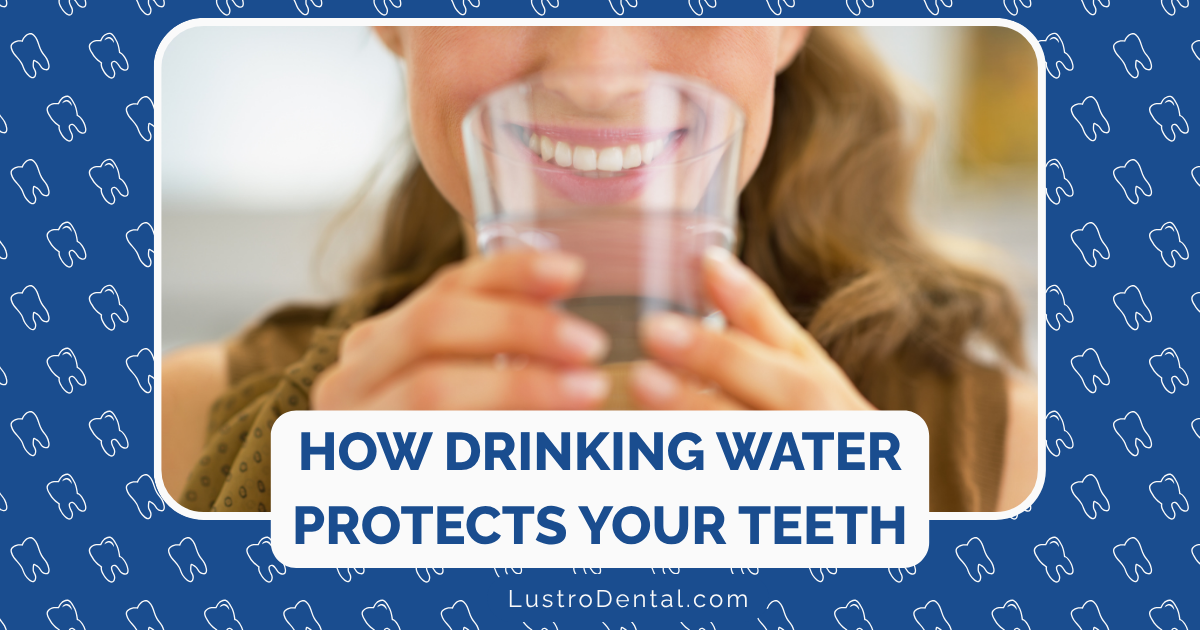Fluoride Facts vs. Fiction: Separating Science from Myths in 2025

Few topics in dentistry generate as much passionate debate as fluoride. While dental professionals have long considered it a cornerstone of preventive care, online forums and social media continue to buzz with claims about its alleged dangers. As we navigate the information landscape of 2025, it’s more important than ever to separate scientific fact from persistent fiction.
As someone who’s dedicated years to dental health education, I’ve watched the fluoride conversation evolve—and sometimes devolve—over time. Let’s cut through the noise and examine what the latest research actually tells us about this mineral’s benefits, limitations, and safety profile.
The Fundamentals: What Is Fluoride?
Before diving into myths and facts, let’s establish a baseline understanding of what fluoride actually is.
Fluoride is a naturally occurring mineral found in varying concentrations in virtually all water sources, many foods, and in the earth’s crust. It’s the 13th most abundant element in the earth’s crust and is released into the environment naturally through weathering processes.
In dentistry, fluoride is valued for its ability to:
- Strengthen tooth enamel
- Remineralize early tooth decay
- Inhibit the growth of cavity-causing bacteria
- Reduce acid production in dental plaque
According to the American Dental Association, fluoride has been studied for over 80 years, making it one of the most thoroughly researched public health measures in history.
Myth #1: Fluoride Is an “Industrial Waste Product” or “Rat Poison”
The Fiction
One of the most persistent claims is that fluoride added to water is an industrial waste product or related to rat poison, implying it’s inherently toxic and dangerous.
The Facts
The fluoride used in water treatment comes from phosphate rock, which is processed to produce food-grade sodium fluoride, sodium fluorosilicate, or fluorosilicic acid. These compounds are specifically manufactured to meet the strict standards of the American Water Works Association and NSF International.
While it’s true that extremely high concentrations of fluoride (far higher than anything used in dentistry) can be toxic—just like virtually any substance, including water and oxygen—the concentrations used in dental applications and water fluoridation are carefully controlled.
As for the “rat poison” claim, this refers to sodium fluoroacetate, a completely different chemical compound that bears little resemblance to the fluoride used in dentistry beyond sharing the word “fluoride” in its name.
Myth #2: Fluoridated Water Causes Lower IQ in Children
The Fiction
Perhaps the most concerning claim circulating in recent years is that fluoride exposure through drinking water lowers children’s IQ and causes neurodevelopmental harm.
The Facts
This myth gained traction due to misinterpretation of scientific studies. In 2024-2025, this topic received renewed attention following the release of the National Toxicology Program’s (NTP) systematic review.
According to the NTP’s 2025 report, there is “moderate confidence” that fluoride exposure above 1.5 mg/L in drinking water is associated with lower IQ in children. However—and this is crucial—the current recommendation for fluoride in U.S. community water supplies is 0.7 mg/L, less than half of this threshold.
The studies showing IQ effects primarily came from areas with naturally high fluoride levels (often 3-5 times higher than U.S. standards) or industrial fluoride pollution. The NTP explicitly stated there is insufficient evidence to determine if the levels used in U.S. water fluoridation have any negative effect on IQ.
Furthermore, a major 2025 study from the University of Queensland found no measurable effect on cognitive development or IQ scores in children exposed to fluoride at levels comparable to those in the U.S.
Myth #3: Fluoride Is a Medication Being “Mass Medicated” Without Consent
The Fiction
Some claim that adding fluoride to water constitutes “forced medication” of the population without individual consent.
The Facts
Fluoride is classified as a nutrient, not a medication. This classification was upheld in a U.S. court ruling, as noted by Dental Solutions.
Fluoride is one of several examples of nutrients that are added to consumer products to improve public health. Other examples include:
- Iodine added to salt to prevent thyroid disease
- Vitamin D added to milk to prevent rickets
- Folic acid added to breads and cereals to prevent birth defects
- Iron added to infant formula to prevent anemia
The American Academy of Pediatrics and other major health organizations classify water fluoridation as a public health measure, similar to chlorination for preventing waterborne diseases.
Myth #4: Fluoride Doesn’t Actually Prevent Cavities
The Fiction
Some claim that the decline in tooth decay over the past several decades is due to better nutrition or oral hygiene, not fluoride.
The Facts
The scientific evidence for fluoride’s cavity-preventing benefits is overwhelming. According to the Washington Post’s 2025 report, community water fluoridation reduces tooth decay by approximately 25% in both children and adults.
Even more compelling is evidence from communities that discontinued fluoridation. For example:
- In Juneau, Alaska, cavity-related dental procedures increased by nearly 50% in children and adolescents after fluoride was discontinued in 2007
- Calgary, Canada, saw such a significant increase in tooth decay after removing fluoride in 2011 that they’ve since decided to reintroduce it
A comprehensive 2021 study cited by Campaign for Dental Health showed that cessation of fluoridation in Calgary led to significantly higher decay rates compared to Edmonton, which maintained fluoridation.
The evidence is particularly strong regarding fluoride’s cost-effectiveness. For every $1 spent on water fluoridation, communities save approximately $20 to $50 in dental treatment costs, according to NYU’s 2025 research.
Myth #5: Europe Has Banned Fluoridation Due to Health Concerns
The Fiction
A common claim is that most European countries have banned water fluoridation due to health concerns.
The Facts
The truth is more nuanced. Most European countries haven’t “banned” fluoridation—they’ve simply chosen different approaches to delivering fluoride.
Many European countries use salt fluoridation instead of water fluoridation. According to the Campaign for Dental Health, fluoridated water reaches over 13 million Europeans, while at least 70 million consume fluoridated salt.
The decision to use salt instead of water often relates to infrastructure, cost, and cultural preferences rather than safety concerns. Countries like Ireland, the UK, and Spain do have water fluoridation programs.
Myth #6: Fluoride Causes Cancer and Other Serious Diseases
The Fiction
Various claims link fluoride to cancer, bone disease, thyroid problems, and other serious health conditions.
The Facts
Extensive research has found no credible evidence linking optimally fluoridated water to cancer or other serious diseases. The American Academy of Pediatrics states that “rigorous reviews of fluoride safety have consistently found no credible evidence linking fluoride to systemic or adverse health issues.”
The National Cancer Institute, the American Cancer Society, and numerous other health organizations have reviewed the scientific evidence and found no link between fluoride at recommended levels and cancer risk.
Similarly, comprehensive reviews have found no connection between community water fluoridation and bone fractures, thyroid dysfunction, or other systemic diseases when fluoride is maintained at the recommended level of 0.7 mg/L.
Myth #7: Fluoride Causes Visible Damage to Teeth
The Fiction
Images of severely discolored and damaged teeth are often shared online as evidence of fluoride’s harmful effects.
The Facts
These images typically show severe dental fluorosis, which occurs only with chronic exposure to very high levels of fluoride (much higher than those used in U.S. water systems or dental products).
In the U.S., where fluoride levels are carefully regulated, dental fluorosis is typically mild and presents as barely noticeable white spots on teeth. According to UCHealth, this mild fluorosis does not affect tooth function or health.
The CDC and EPA work together to ensure that public water fluoridation stays within safe limits to minimize even mild fluorosis while maximizing cavity prevention benefits.
Myth #8: If You Use Fluoride Toothpaste, You Don’t Need Fluoridated Water
The Fiction
Some argue that fluoridated water is redundant if you’re already using fluoride toothpaste.
The Facts
Research shows that fluoride toothpaste and fluoridated water provide additive benefits. According to Dental Solutions, the fluoride in toothpaste alone does not provide sufficient protection against tooth decay.
Fluoridated water provides continuous low-level exposure throughout the day, while toothpaste provides a higher concentration briefly. The combination of both delivery methods has been shown to be more effective than either alone.
This is particularly important for children, older adults, and those with limited access to dental care, who benefit significantly from the “background protection” that fluoridated water provides.
Myth #9: Fluoride Only Benefits Children, Not Adults
The Fiction
Some claim that fluoride only helps developing teeth in children and provides no benefit to adults.
The Facts
While fluoride is indeed crucial during tooth development, adults continue to benefit from fluoride exposure throughout life. According to research cited by the Campaign for Dental Health, a 2007 review found that water fluoridation reduces tooth decay by about 27% among adults.
Adults face unique oral health challenges as they age, including:
- Root exposure due to gum recession, making teeth more vulnerable to decay
- Dry mouth from medications, which increases cavity risk
- Existing dental work that creates areas difficult to clean
Fluoride helps address these issues by strengthening enamel, promoting remineralization, and providing antibacterial effects.
Myth #10: Natural Is Always Better (Fluoride-Free Products)
The Fiction
Marketing for “natural” oral care products often implies that fluoride-free alternatives are healthier and equally effective.
The Facts
While natural products have their place, the scientific evidence overwhelmingly supports fluoride’s effectiveness in preventing cavities. No alternative has demonstrated comparable benefits in rigorous clinical trials.
Most major dental organizations, including the American Dental Association, continue to recommend fluoride as the gold standard for cavity prevention. The Washington Post’s 2025 report notes that fluoridated toothpaste is not a substitute for fluoridated water; both provide additive protection for teeth.
Some natural ingredients like xylitol have shown promise in supporting oral health, but they work best as complements to, not replacements for, fluoride.
The Latest Research: What’s New in 2025?
The fluoride conversation continues to evolve with new research. Here are some of the most significant recent developments:
1. EPA Review of Fluoride Standards
In April 2025, the Environmental Protection Agency announced a review of the fluoride standard under the Safe Drinking Water Act, currently set at 4.0 mg/L (much higher than the 0.7 mg/L used in community water fluoridation).
This review was prompted by the NTP report and aims to ensure that regulations continue to be based on the best available science. It does not indicate concerns about current water fluoridation practices.
2. Refined Understanding of Dose-Response
Recent research has helped refine our understanding of fluoride’s dose-response relationship—essentially, how much is beneficial versus how much might pose risks.
The current consensus supports maintaining the 0.7 mg/L recommendation for water fluoridation, which provides cavity prevention benefits while minimizing any potential risks.
3. Health Equity Implications
Perhaps the most important recent finding is the role of fluoridation in promoting health equity. According to NYU’s 2025 research, lower-income communities and children are most impacted when fluoride is removed from water systems, exacerbating existing health disparities.
A 2021 NIH report praised water fluoridation for reducing socioeconomic disparities in tooth decay, making it an important tool for addressing healthcare inequities.
Making Informed Decisions About Fluoride
With so much conflicting information available, how can you make informed decisions about fluoride for yourself and your family?
1. Consider the Source
When evaluating fluoride information, consider:
- Is it from a reputable health organization or peer-reviewed scientific journal?
- Do the authors have relevant credentials in dentistry, public health, or toxicology?
- Are claims supported by specific studies that can be verified?
- Is the information presented in a balanced way, acknowledging both benefits and limitations?
2. Understand Your Personal Risk Factors
Fluoride needs can vary based on individual factors:
- Cavity history and risk
- Age and developmental stage
- Access to dental care
- Local water fluoride content
- Diet and oral hygiene habits
Your dentist can help assess your specific needs and recommend appropriate fluoride sources and concentrations.
3. Balance Risks and Benefits
Like any health intervention, fluoride use involves weighing potential benefits against potential risks. The scientific consensus strongly supports that at recommended levels:
- The benefits of fluoride for preventing tooth decay are substantial and well-documented
- The risks are minimal and primarily limited to mild cosmetic fluorosis when used as directed
4. Consider the Consequences of Avoidance
When deciding whether to use fluoride, consider the potential consequences of avoiding it:
- Increased risk of tooth decay
- Higher likelihood of needing invasive dental treatments
- Greater dental expenses over time
- Potential pain and complications from untreated decay
Conclusion: Following the Evidence
After reviewing the latest scientific evidence, the conclusion is clear: fluoride, when used at recommended levels, remains one of our most effective and cost-efficient tools for preventing tooth decay and promoting oral health.
The myths surrounding fluoride often stem from misunderstandings of the science, confusion about dosage, or misinterpretation of research findings. When examined critically, these myths don’t stand up to scientific scrutiny.
As we navigate the ever-evolving landscape of dental health information in 2025, let’s commit to following the evidence rather than the headlines, consulting trusted health professionals, and making decisions based on science rather than fear.
After all, good oral health is too important to leave to chance—or to misinformation.
Have questions about fluoride or your specific oral health needs? I’d love to hear from you in the comments below!







